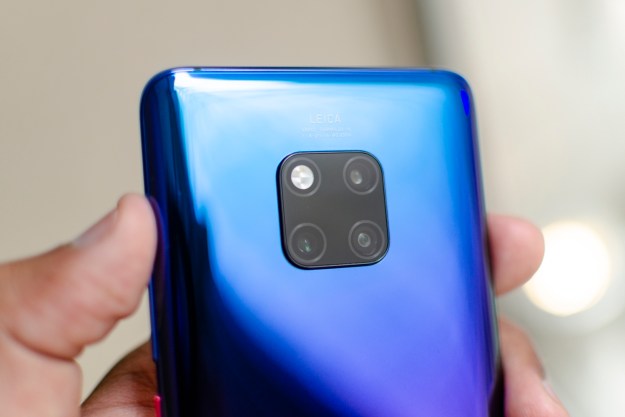 If you’re going to do something, you might as well do it big. That appears to be the strategy Huawei has taken when creating its newest line of smartphones. The biggest of them all, the Ascend Mate, made its debut on the CES 2013 stage today. With a 6.1-inch (6.1-inch!) screen, the device will immediately draw comparisons to Samsung’s Galaxy Note 2 — a challenge Huawei seems to welcome.
If you’re going to do something, you might as well do it big. That appears to be the strategy Huawei has taken when creating its newest line of smartphones. The biggest of them all, the Ascend Mate, made its debut on the CES 2013 stage today. With a 6.1-inch (6.1-inch!) screen, the device will immediately draw comparisons to Samsung’s Galaxy Note 2 — a challenge Huawei seems to welcome.
The Ascend Mate isn’t just a big screen, but the device itself is mostly screen. With a 0.73 screen-to-frame ratio and 9.9mm thickness, Huawei is wasting little space on this device. Every part of that 6.1-inch screen will be sending through a 1920 x 1080 pixel resolution, touting 316 pixels per inch.
Providing power for that display will be a battery bigger than any rumor was able to guess: A 4050mAh battery, the largest such battery in a mobile device we know of. While that battery is huge, it also won’t be drained easily. With the heelp of a patented technology, Automatic Discontinuous Perception, the Ascend Mate consumes 20% less power. CEO Richard Yu also bragged of 25 percent less time charging compared to the Galaxy Note II.
Aside from the size, the Ascend Mate has quite a few other features centered around the screen that should intrigue. A feature called Magic Touch makes the touchscreen function even if a user is wearing gloves. Richard Yu placed his tie between his hand and the screen and was still able to operate the device.
Displayed on the screen of the Mate are several new user interface elements. Starting with the One Hand UI, owners of the handset will have the capability to shift elements like the keyboard or dial pad to another side of the screen, making it usable with one hand. Another of the UI innovations is Easy Panel, which allows apps to float over other apps, giving access to multiple apps and information inside them at the same time.
Other key features for the Ascend Mate included an application called Guiding Wizard. While it sounds like the same type of program that would lead you painfully step-by-step through the process of setting up a printer, it’s actually an augmented reality navigation app. Smart Reading allows users to isolate a word or phrase and quickly search, define, or translate it. Building off the “go big” theme that Huawei brought with the Ascend Mate, the company also seemed to decide two is always better than one. As such, Huawei included dual WiFi recievers, capable of 150Mbps WiFi speed, and dual microphones making conference calls possible from over 1.5 meters away from the phone.
While no price point has been announced yet, the Ascend Mate will make its debut in China as early as February of this year.
Editors' Recommendations
- Apple AirTag, Samsung Galaxy SmartTag2, Tile Mate prices slashed
- I used a phone that’s the opposite of the Galaxy Z Fold 4, and I want more
- Huawei’s Mate series to return with the Mate 50 next month
- Wedge-shaped MateBook X Pro headlines Huawei’s MWC lineup
- Huawei Mate X2’s outstanding hardware stuns, but there is a shocking downside


